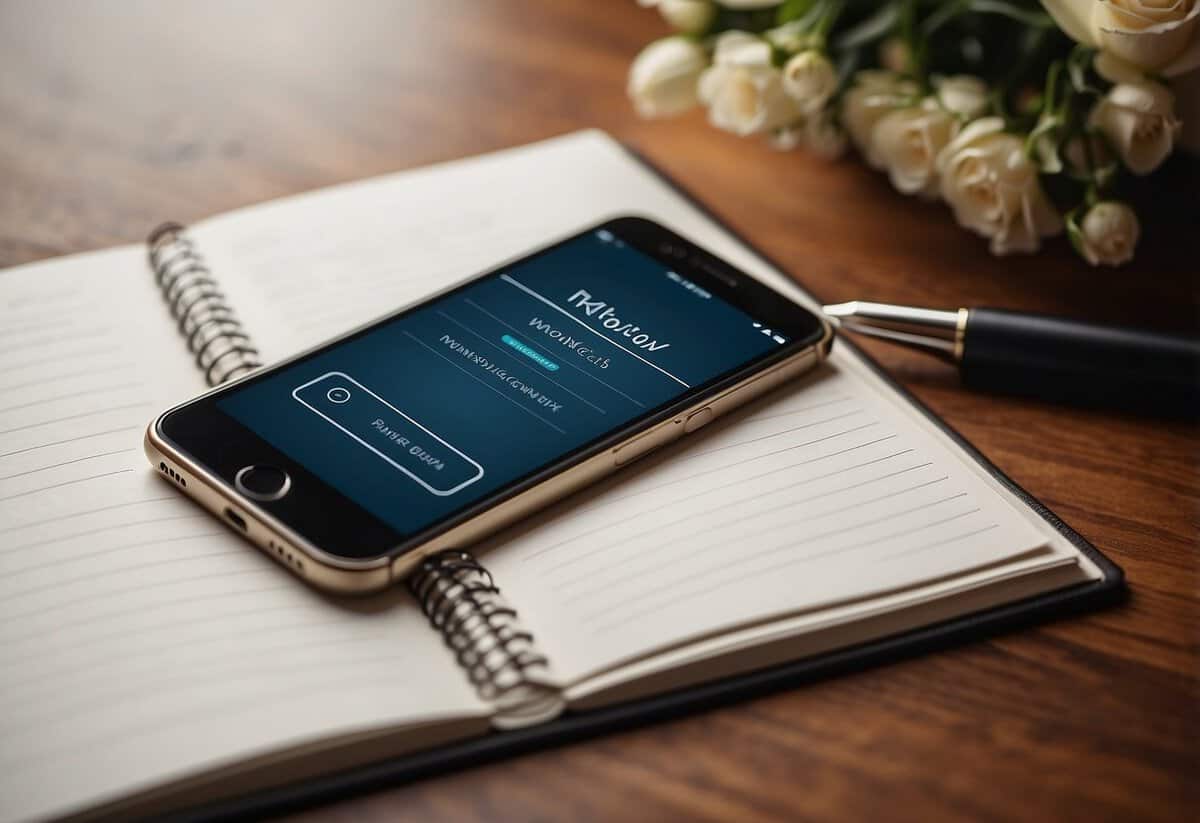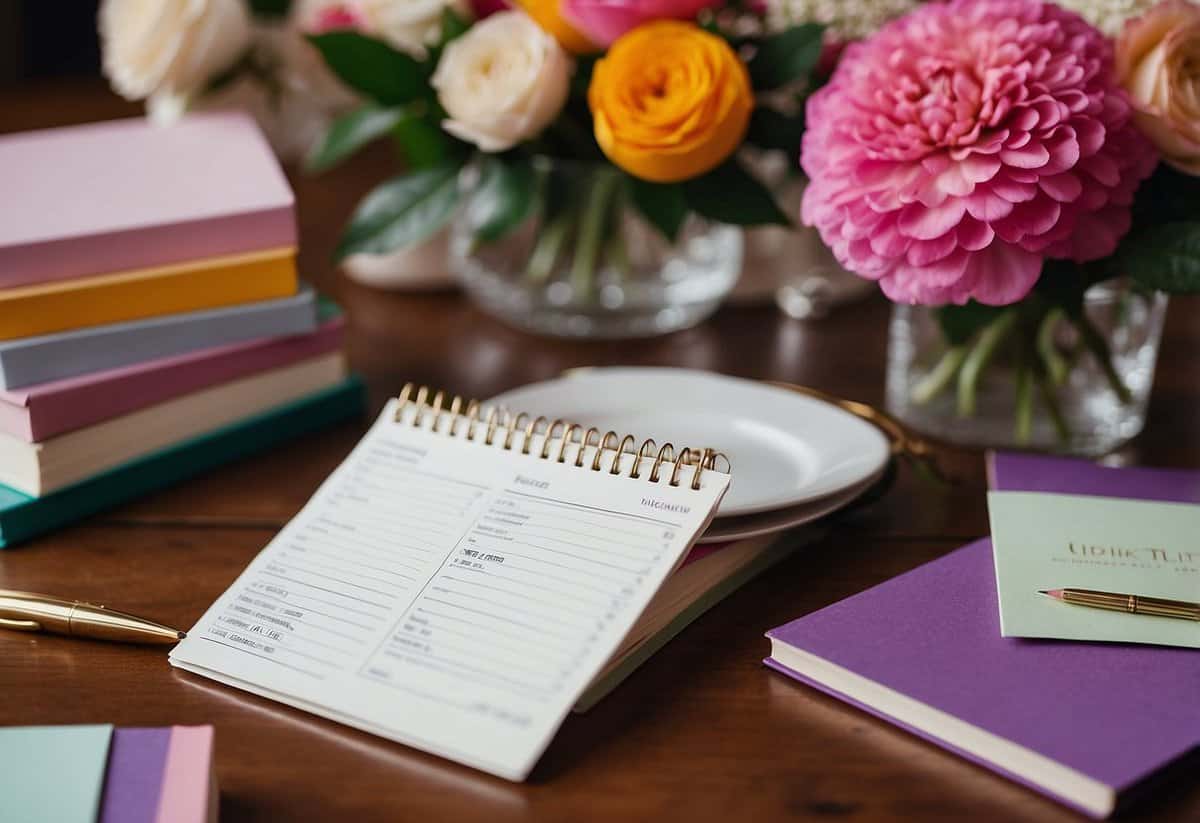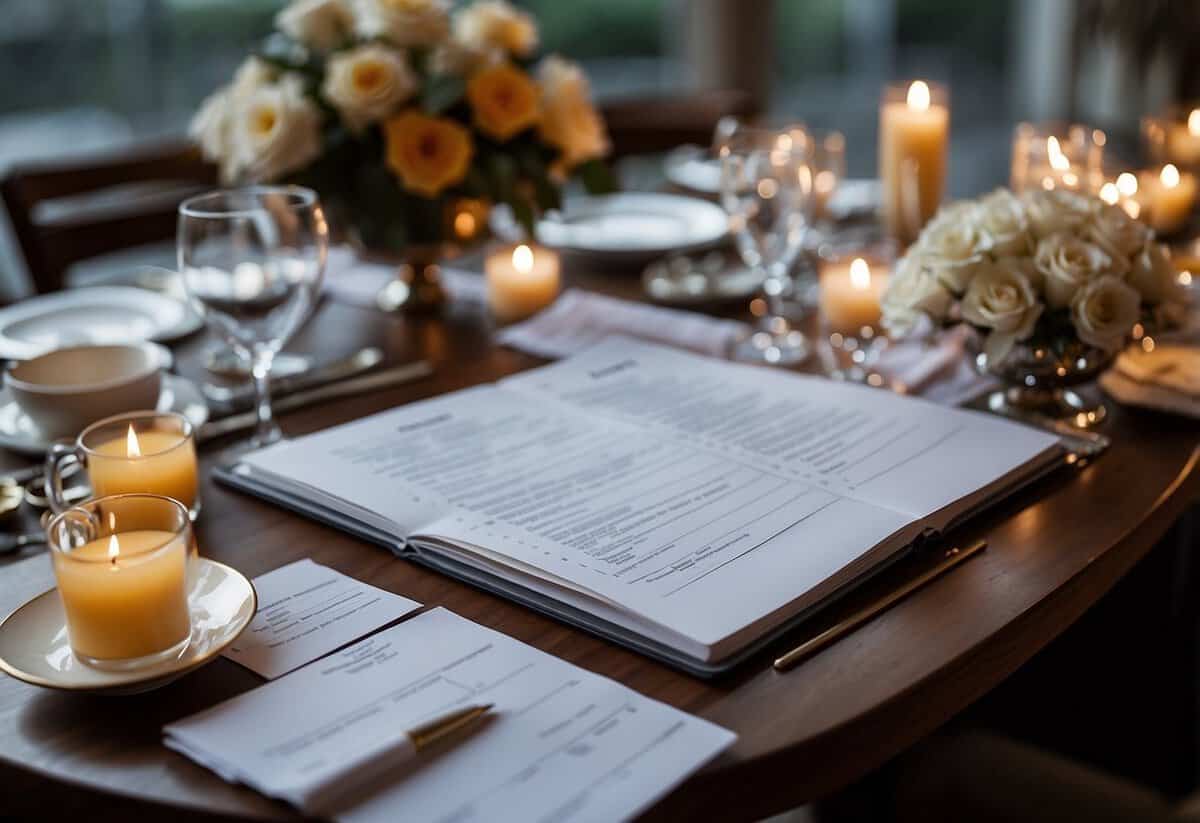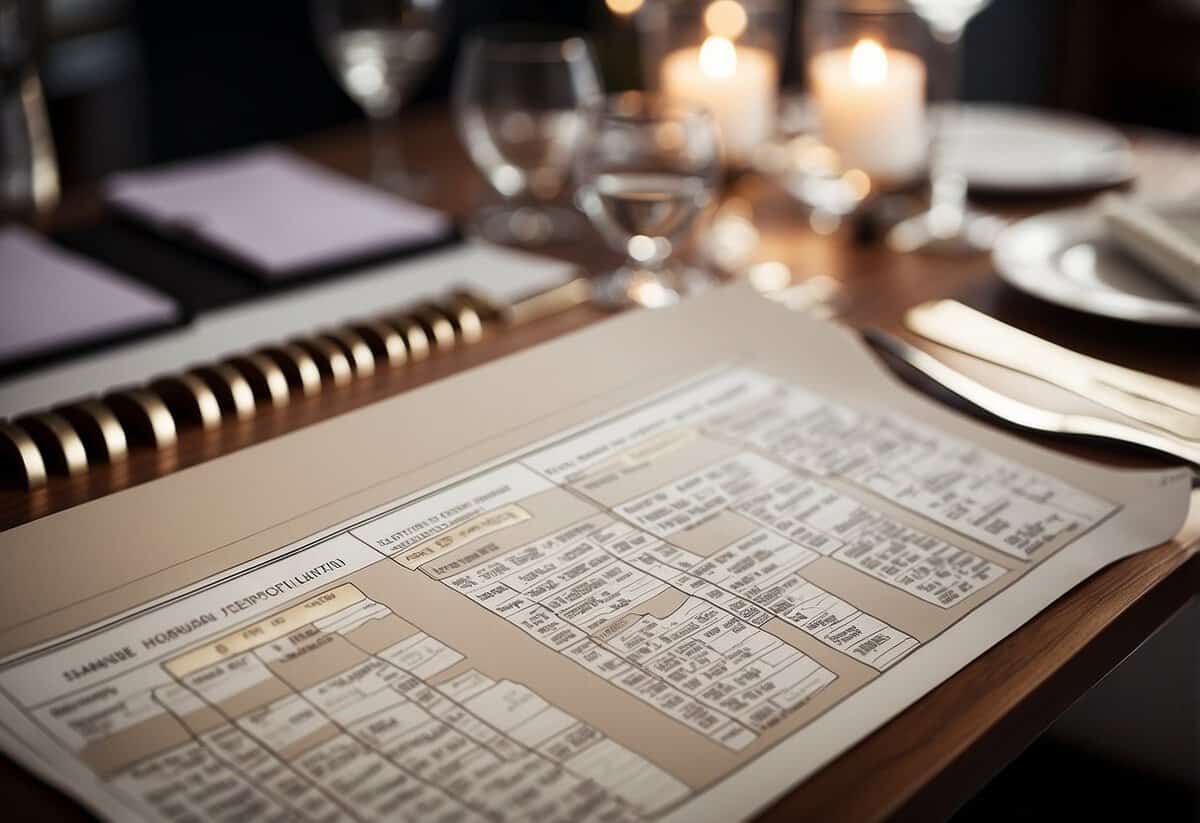Wedding Planning Organization Tips: Easy Steps for a Stress-Free Big Day
Planning a wedding can feel overwhelming, but staying organized makes it a smoother experience. From sorting guest lists to managing vendors, every detail needs attention to ensure your big day is perfect. By following a few key organization tips, you can keep everything on track and reduce stress.

Having a method to your planning will help you enjoy this special time. Effective organization lets you focus on the joy of getting married without losing sight of the tasks at hand.
1) Create a Wedding Timeline

A well-planned timeline keeps your wedding day running smoothly. Start planning early to manage your time better.
First, list the major events. This includes the ceremony, reception, and any special moments like the first dance.
Next, assign times to each event. Be realistic. Leave room for travel, photos, and unexpected delays.
Organize smaller details too. Plan when you’ll wake up, eat breakfast, and get dressed. These details matter.
Check with vendors and confirm their schedules. Make sure everyone is on the same page.
Share your timeline with key people. This includes the wedding party, family, and vendors. Everyone should know the plan.
2) Set a Budget and Stick to It

First, you need to figure out how much money you can spend on your wedding. Talk with your partner about who is contributing and how much each person can afford. This will help you set a realistic budget.
Next, prioritize what’s most important. Decide which parts of the wedding matter the most to you, like the venue, food, or photos. Spend more on these key areas and find ways to save on less important aspects.
Keep track of your spending. Open a separate bank account just for wedding expenses. This will make it easier to see how much you’ve spent and how much you have left. Use a spreadsheet or a budgeting app to track each expense.
Remember, sticking to your budget means making smart choices. Be creative and look for ways to save without sacrificing your big day’s special moments.
3) Use a wedding planning app

Planning a wedding can be overwhelming, but using the right app can make it easier. Many apps help you keep track of tasks, manage your budget, and organize guest lists.
Apps like Airtable and Fudget are great for organizing all your wedding details. Airtable acts like a mix of a spreadsheet, calendar, and to-do list. Fudget helps you monitor your spending.
For travel details, especially if you are planning a destination wedding or honeymoon, TripIt can be very useful. It keeps all your travel plans in one place.
Using a wedding planning app can help you stay on top of things and reduce stress. Keeping everything organized in one app makes planning your big day much smoother.
4) Hire a Wedding Planner

Hiring a wedding planner can make the whole process smoother. Planners bring experience to the table. They know the best local vendors and can help you stick to your budget.
Ask friends and family members for planner recommendations. Personal referrals often lead straight to trusted professionals with proven track records.
Check if your venue has a list of recommended or required planners. Many couples find their planners this way.
Online reviews and wedding planning websites like The Knot can also help you find a good planner. These sites offer reviews and ratings from other couples, giving you a clear idea of who’s reliable.
Choose a planner who understands your vision. Have a detailed discussion about your style and preferences to ensure they can bring your dream wedding to life. Make sure to feel comfortable with them, as you’ll be working closely together.
5) Delegate Tasks to Trusted Friends

Planning a wedding can be overwhelming. Don’t try to do everything yourself.
Ask trusted friends to help with smaller tasks. They can address invitations or pick up decorations.
Some friends may enjoy working on creative tasks like assembling favors or making signs.
By delegating, you can focus on more important details and enjoy your special day without stress.
6) Create a wedding day emergency kit

Having a wedding day emergency kit can save you from unexpected mishaps. Start with a compact first aid kit. Include bandages, antibiotic ointment, and hand sanitizer wipes.
Add in some hygiene and grooming items. Pack tweezers, tissues, and chapstick. These will help with tears, stray hairs, and dry lips.
Make sure to have some makeup essentials. A touch-up lipstick and a small mirror will come in handy. Don’t forget a small sewing kit for any wardrobe malfunctions.
Lastly, pack some comfort items. Consider pain relievers, snacks, and water to keep everyone feeling good throughout the day.
7) Schedule meetings with vendors

Start by booking your vendor meetings in advance. This helps ensure that both you and the vendors have enough time to prepare.
When scheduling, try to meet with vendors early in the planning process. This will give you plenty of time to adjust plans if needed.
Bring your partner to these meetings. Their input can be valuable, and it’s a great way to share the excitement together.
Make a checklist of questions to ask during the meeting. This can include topics like pricing, timelines, and what services are included.
Always bring a copy of your budget. It’s important to discuss and stick to your financial plan to avoid any surprises later.
Use tools like calendars or apps to keep track of your meeting dates and times. Alerts and reminders can help you stay organized and on top of things.
8) Organize Your Guest List

Making a wedding guest list can feel like a huge task. Start by listing everyone you think should be there—family, friends, co-workers.
Next, sort the list into categories: close family, extended family, friends, etc. This will help you prioritize.
Using a spreadsheet can make this easier. You can track details like addresses and RSVPs.
Finally, set a cap on the number of guests to stay within your budget. This will make trimming the list simpler.
9) Plan a Wedding Rehearsal

The wedding rehearsal is a crucial part of wedding planning. It helps ensure everything runs smoothly on the big day.
Schedule the rehearsal a day or two before the wedding. This way, everyone remembers their roles.
Choose the rehearsal location, ideally the actual ceremony site. This helps everyone get familiar with the space.
Prepare a simple agenda for the rehearsal. Outline the order of events clearly.
Consider the rehearsal dinner. Send out invites at least 4 weeks in advance. If the dinner is formal, ask guests to dress accordingly. For a casual setting, casual attire is fine.
Remember to limit the rehearsal dinner to a couple of hours. Everyone needs to be fresh for the wedding day.
Giving small gifts to your wedding party during the rehearsal dinner is a nice gesture. It shows appreciation for their support.
10) Arrange Transportation for Guests

Making sure your guests have a way to get to and from your wedding is important. If many guests are coming from out of town, arrange for them to be picked up from the airport or hotel.
Consider renting a shuttle or bus. Larger vehicles can transport more people at once, making it easier and often cheaper. You can also look into local trolleys or party buses for a fun option.
For guests with special needs, plan ahead. Make sure there are accessible options for everyone. You may even want to ask someone to help with transportation if needed.
Being thoughtful about transportation shows you care about your guests’ comfort and convenience. It helps everyone enjoy your special day without any hassle or stress.
Try to schedule transportation so people arrive and leave at convenient times. This keeps things running smoothly and ensures that all your guests can fully enjoy the celebration.
Setting a Timeline

Organizing your wedding timeline helps ensure that everything flows smoothly on your special day. This involves creating a detailed schedule and making efforts to adhere to it.
Creating a Wedding Timeline
Start by setting the date and time for your wedding day. Identify key events such as the ceremony, cocktail hour, and reception. Create a list of tasks leading up to the day, starting as early as engagement announcements and going up to finalizing guest lists.
Example Timeline:
- 12-14 months before: Announce engagement, set budget, hire a planner.
- 6-8 months before: Book venue, photographer, caterer.
- 3-4 months before: Send invitations, plan the ceremony.
- 1 month before: Confirm details with vendors, finalize seating charts.
Use tools like calendars, planner apps, or even a physical binder to keep track. Breaking down tasks by month and week helps stay on top of everything.
Sticking to Your Schedule
Keep yourself accountable by setting reminders for deadlines. Share your timeline with key people such as your partner, wedding planner, and family. They can help keep you on track.
Regularly check your progress. Adjust dates and times if needed, but try to avoid major changes close to the wedding.
Make use of apps that offer checklists and alerts. Some popular choices are WeddingWire or The Knot, which can sync across devices. These tools can send notifications and keep all details in one place.
Effective time management reduces stress and ensures a memorable wedding day.
Budget Management

Managing your wedding budget can feel overwhelming, but breaking it down into simple steps helps you stay on track. Setting priorities and monitoring your spending will ensure you get the most out of every dollar.
Allocating Funds Wisely
First, decide what aspects of your wedding are most important to you. This might include the venue, catering, or photography. Allocate a bigger portion of your budget to these areas.
Make a list of must-haves and nice-to-haves. Separate your budget into categories, such as dress, decorations, and entertainment. Assign percentages or specific amounts to each category based on your priorities.
Example Budget Breakdown:
- Venue: 30%
- Catering: 25%
- Photography: 15%
- Attire: 10%
- Decorations: 10%
- Miscellaneous: 10%
Tracking Expenses
Keep track of every expense, no matter how small. Use a spreadsheet or a budgeting app to monitor your spending. Record the initial quotes, down payments, and final amounts spent.
Periodically review your budget to see where you stand. Adjust if necessary to avoid overspending in any one area. It’s helpful to save all receipts and contracts.
Example Tracking Log:
| Category | Budgeted Amount | Spent Amount |
|---|---|---|
| Venue | $3,000 | $2,800 |
| Catering | $2,500 | $2,600 |
| Photography | $1,500 | $1,400 |
Regular updates will help prevent surprises and ensure you stay within your budget.







